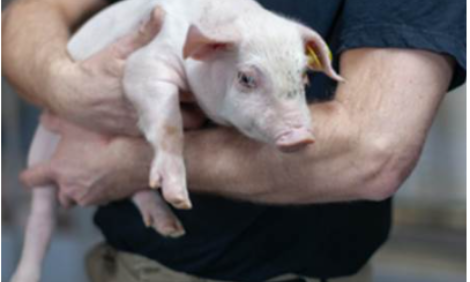



Impact of Medicated Feed on Development of Antimicrobial-Resistant Bacteria in Integrated Pig-Fish Farms
Researchers in Viet Nam have found evidence that tetracycline and enrofloxacin added to pig feeds led to the development of resistance in bacteria in the water and pond sediments in combined pig-fish farms.Son Thi Thanh Dang of Viet Nam's National Institute of Veterinary Research in Hanoi and co-authors in Viet Nam and Denmark have studied the impact of medicated feed on the development of antimicrobial-resistant bacteria in integrated pig-fish farms in Viet Nam. Their paper is published in a recent issue of Applied Environmental Biology.
Integrated livestock-fish aquaculture utilises animal excreta, urine and feed leftovers as pond fertilisers to enhance growth of plankton and other microorganisms eaten by the fish, explain the authors. However, antimicrobial-resistant bacteria may be transferred and develop in the pond due to selective pressure from antimicrobials present in animal feed, urine and faeces.
In an experimental pig-fish farm located in peri-urban Hanoi, nine piglets were provided feed containing 5µg per kilo pig weight per day of tetracycline (TET) and enrofloxacin (ENR) at 0.45µg/kg pig weight/day during the second and fourth (last) month of the experiment.
The aim was to determine the association between the provision of pig feed with antimicrobials and the development of antimicrobial resistance as measured in a total of 520 E. coli and 634 Enterococcus spp. strains isolated from pig manure and water-sediment pond samples.
MIC values for nalidixic acid (NAL) and ENR showed that E. coli and Enterococcus spp. overall exhibited significant higher frequencies of resistance towards NAL and ENR during the two months when pigs were administered feed with antimicrobials, with frequencies reaching 60 to 80 per cent in both water-sediment and manure samples.
TET resistance was high (>80 per cent) for both indicators throughout the study period, which indicates that TET-resistant E. coli and Enterococcus spp. were present in the piglets before the initiation of the experiment.
PCR-based identification showed similar relative occurrences of E. faecium, E. faecalis and other Enterococcus spp. in the water sediment and manure samples suggesting that Enterococcus spp. isolated in the ponds mainly originated from the pig manure.
Dang and co-authors suggest that the development of antimicrobial resistance in integrated animal husbandry-fish farms and possible transfers and impact of such resistance on food safety and human health should be further assessed.
Reference
Dang S.T.T., A. Petersen, D.V. Truong, H.T.T. Chu and A. Dalsgaard. 2011. Impact of medicated feed on the development of antimicrobial resistant bacteria in integrated pig-fish farms in Vietnam. Appl. Environ. Microbiol. doi:10.1128/AEM.02975-10
Further Reading
| - | You can view the full report (fee payable) by clicking here. |
July 2011








